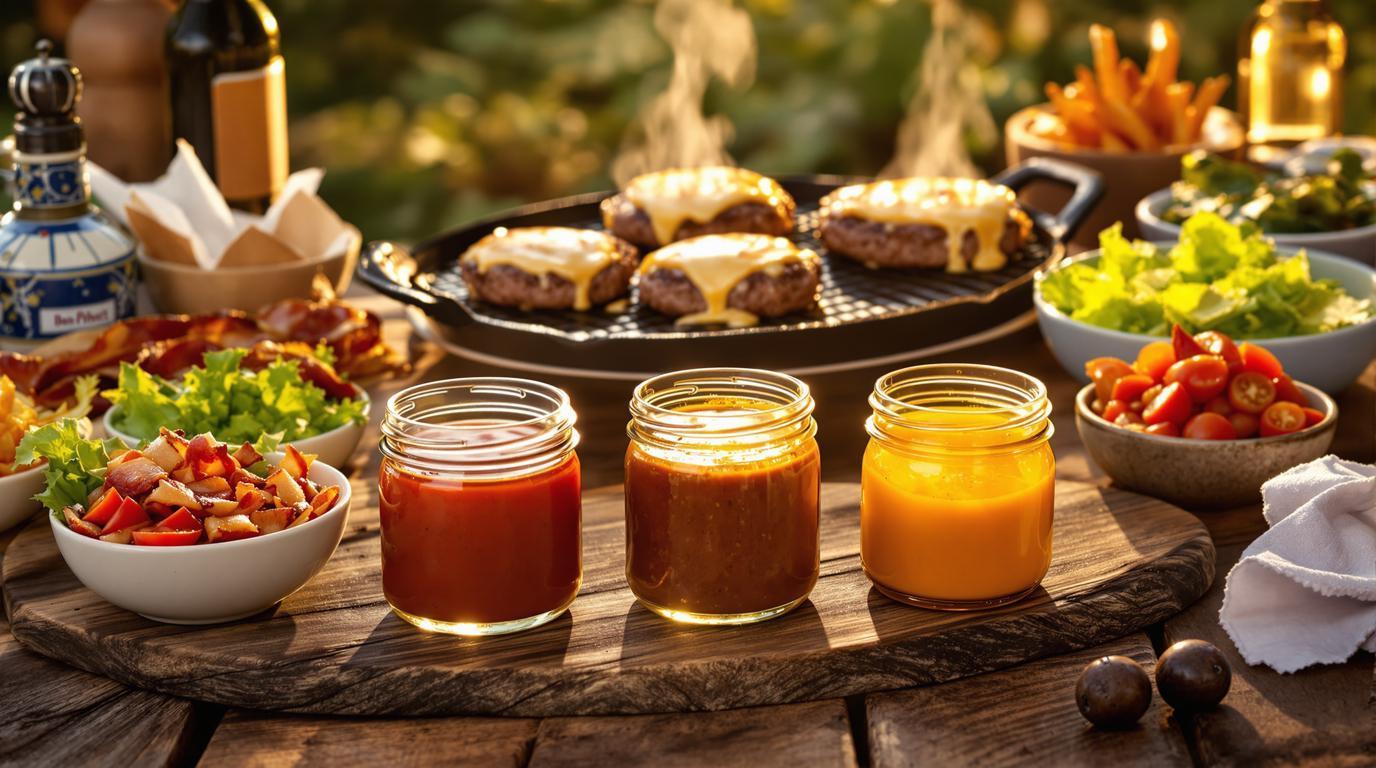I still remember my grandmother’s face lighting up as she’d announce, “Burger night!” in her farmhouse kitchen. It wasn’t just dinner—it was an event. Unlike today’s fast-food counterparts, her burgers were a labor of love, featuring a spread of homemade sauces and toppings that transformed simple ground beef into something magical. The burger bar concept actually emerged in mid-20th century America when home entertaining became fashionable, giving guests the joy of customization while hosts maintained the tradition of generous hospitality. The sizzle of beef hitting a hot grill still takes me right back to those summer evenings on her screened porch.
The Perfect Burger Patty Foundation
The soul of any burger bar starts with the patty itself. In my decades of professional cooking, I’ve found that simplicity yields the most authentic results. Begin with 1 pound (450g) of ground beef with an 80/20 lean-to-fat ratio—this balance creates the juiciness grandmothers instinctively knew was essential. In a large bowl, combine your beef with 1 small finely grated onion, 1 beaten egg (optional, but helps binding), ¼ cup breadcrumbs (my grandmother’s secret for tenderness), 1 tablespoon each of Dijon mustard and Worcestershire sauce, 1 tablespoon garlic powder, ¾ teaspoon salt, and 1 teaspoon freshly ground black pepper.
Here’s where technique matters: mix these ingredients with a gentle touch, preferably using a fork or your fingertips, until just combined. Overmixing is the nemesis of tender burgers—something I learned the hard way during my first restaurant job. Divide your mixture into four equal portions and shape into ¾-inch thick patties, creating a slight thumb indentation in the center to prevent doming during cooking.
Chef’s Note: Always let your patties rest at room temperature for 30 minutes before cooking. This simple step ensures even cooking and develops better browning, creating that perfect crust we all crave. I missed this step for years until an old Italian chef set me straight!
The Triple-Sauce Strategy
The magic of a burger bar lies in its sauces. Create three distinct options:
- Classic American Sauce: Mix equal parts ketchup, yellow mustard, and sweet pickle relish for that nostalgic tangy flavor that complements beef perfectly.
- Garlic Parmesan Aioli: Combine ½ cup mayonnaise with 1 teaspoon minced garlic and 2 tablespoons grated Parmesan cheese for an elevated option.
- Smoky BBQ Aioli: Blend ½ cup mayonnaise with 2 tablespoons chipotle BBQ sauce and a sprinkle of chopped fresh cilantro for a smoky kick.
For those avoiding dairy, substitute the Parmesan in the garlic aioli with 1 tablespoon of nutritional yeast, which provides a similar savory note without the dairy commitment.
Cooking for Perfection
Heat your grill to medium-high (around 400°F/205°C). Place patties on the oiled grate and resist the temptation to press them down—this only squeezes out precious juices. Cook for approximately 5 minutes per side for medium doneness, or until the internal temperature reaches 130-135°F (54-57°C). During the last minute of cooking, top with your cheese of choice (cheddar, American, or Swiss) to achieve that perfect melt. Meanwhile, lightly toast your hamburger buns for textural contrast.
For those without a grill, a cast-iron skillet over medium heat works beautifully, creating an exceptional crust that rivals any outdoor cooking method. The key is patience—don’t flip too early, let that first side develop character.
The Ultimate Burger Bar Assembly
Arrange your three sauces in small bowls alongside two signature toppings: perfectly melted cheese and crispy bacon (cooked until just shy of brittle). Consider adding fresh lettuce, sliced tomatoes, raw and caramelized onions, and pickles to round out the offerings. There’s something deeply satisfying about watching guests customize their burgers, creating combinations that speak to their personal tastes.
My smoky maple-glazed salmon technique can inspire a wonderful variation here—try brushing patties with maple syrup in the final minute of cooking for a sweet-savory element that many of my restaurant customers requested repeatedly.
For a complete meal experience, serve your burger bar with French lentil salad for an unexpected but delicious pairing that cuts through the richness of the beef. The contrasting textures create a balanced plate that even my grandmother would approve of.
Beyond the Basic Burger
Once you’ve mastered the classic, consider regional variations. Create a Mediterranean twist inspired by my travels through Greece by offering crumbled feta, Kalamata olives, and tzatziki sauce. Or explore Korean flavors with gochujang mayo and kimchi slaw—a combination I fell in love with while cooking in Seoul. For something closer to home, my Southern colleagues taught me to top burgers with fried green tomatoes and pimento cheese for the ultimate comfort food experience.
The beauty of the burger bar concept is that it respects tradition while welcoming creativity. Much like my grandmother’s Moroccan couscous approach, it’s about transforming humble ingredients into something extraordinary.
Whether you’re serving Mexican street-inspired toppings or keeping it classic with oven-baked feta as a burger addition, remember that at its heart, the burger bar celebrates what cooking is truly about: bringing people together around food that comforts, delights, and creates lasting memories. Just as my grandmother did, decades ago, on those perfect summer evenings.
